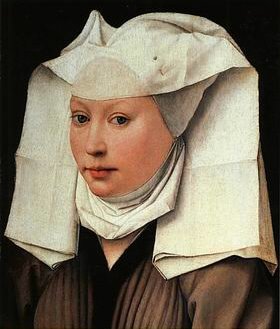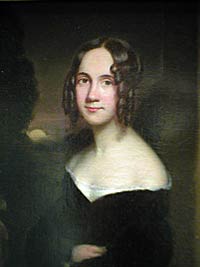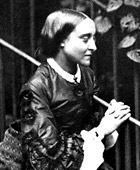Welcome to the Holy Women, Holy Men blog! We invite you to read about this commemoration, use the collect and lessons in prayer, whether individually or in corporate worship, then tell us what you think. For more information about this project, click here.
Nicolaus von Zinzendorf (1700-1760) was a Count of the Holy Roman Empire who always had more interest in religious matters than in affairs of court. Following studies at the pietist center of Halle, he developed his own “theology of the heart,” which placed great emphasis on a close personal relationship with the suffering Savior.
This “heart religion” was not just inner emotion, however, but was to result in a life totally devoted to the Savior. “All of life becomes a liturgy,” said Zinzendorf, and even the most mundane task can be an act of worship.
Always a champion of the underdog, he granted asylum to Czech Protestant exiles. Following a unifying experience on August 13, 1727, in their settlement of Herrnhut on his estate, the old church of the Unitas Fratrum or Bohemian Brethren was reborn and developed a rich liturgical and devotional life. This Moravian Church as it came to be called launched pioneer mission work, first in the Caribbean and then around the world. Zinzendorf himself became a bishop, and devoted his personal fortune to furthering the work of the church.
He was an early advocate of ecumenism, and in America he attempted to bring Protestant denominations together in the “Pennsylvania Synods.” He was not a systematic theologian, but produced numerous theological writings, widely read in Germany. In addition to these, he was a prolific hymn writer, and many of his hymn texts remain in use today in the Moravian Church and beyond. His view of the church is summed up in his stanza:
Christian hearts, in love united,
seek alone in Jesus rest;
has he not your love excited?
Then let love inspire each breast.
Members on our Head depending,
lights reflecting him, our Sun,
brethren—his commands attending,
we in him, our Lord, are one.
(Moravian Book of Worship 1995: 673)
Collects
I. God of life made new in Christ, who dost call thy Church to keep on rising from the dead: We remember before thee the bold witness of thy servant Nicolaus von Zinzendorf, through whom thy Spirit moved to draw many in Europe and the American colonies to faith and conversion of life; and we pray that we, like him, may rejoice to sing thy praise, live thy love and rest secure in the safekeeping of the Lord; who liveth and reigneth with thee and the Holy Spirit, one God, now and for ever. Amen.
II. God of life made new in Christ, you call your Church to keep on rising from the dead: We remember before you the bold witness of your servant Nicolaus von Zinzendorf, through whom your Spirit moved to draw many in Europe and the American colonies to faith and conversion of life; and we pray that we, like him, may rejoice to sing your praise, live your love and rest secure in the safekeeping of the Lord; who lives and reigns with you and the Holy Spirit, one God, now and for ever. Amen.
Lessons
Psalm 101:1–4
Nehemiah 12:27–31a, 43
2 Thessalonians 2:13–3:5
John 16:16–22
Preface of a Saint (3)
From Holy, Women, Holy Men: Celebrating the Saints © 2010 by The Church Pension Fund. Used by permission.
* * *
We invite your reflections about this commemoration and its suitability for the official calendar and worship of The Episcopal Church. How did this person’s life witness to the Gospel? How does this person inspire us in Christian life today?
To post a comment, your first and last name and email address are required. Your name will be published; your email address will not. The first time you post, a moderator will need to approve your submission; after that, your comments will appear instantly.









